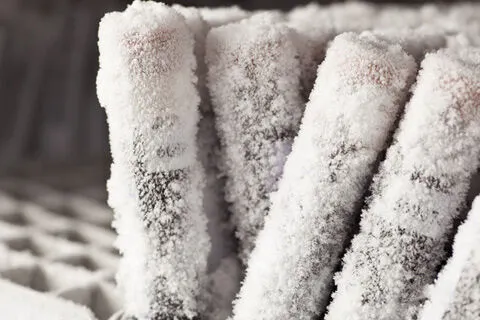Cryogenic Management

Cryogenic Management looks at the installment and maintenance of pumps for the use of handling liquid cryogens. Along with maintenance, preventing fractures in piping and other management techniques are recommended in these standards.
CGA P-56-2022
Cryogenic Vaporization Systems - Prevention of Brittle Fracture of Equipment and Piping
This publication applies to cryogenic liquid supply systems, located either on a customer site or a production site, where cryogenic liquid is vaporized and is then supplied either as the primary or secondary source of gaseous product. This publication is limited to the prevention of brittle fracture in piping and associated equipment installed downstream of the vaporization system.The secondary source of supply can be a back-up supply to a production plant when the production plant trips or is shut down, a supplementary supply to meet customer demand where it exceeds the capacity of the production plant (peak shaving), or as a back-up supply at a customer site (for example, a healthcare facility). The safeguard principles presented in this publication apply to any process fluid supply system where the temperature of the cryogenic liquid source is less than the minimum temperature rating of the piping and/or associated equipment downstream of the vaporizer. Although this publication does not cover the following situations, the techniques listed may be considered for cold embrittlement prevention: Air separation and other cryogenic processes with columns, separators, or tanks in which a gas stream from a sump is normally supplied through downstream heat exchange equipment, or liquefaction units where a cryogenic fluid can exit through warm-end process piping during a shutdown or upset scenario. Cryogenic processes are assumed to have their own LTPS; Piping systems within which a fluid is expanded across a valve or restriction with the resultant temperature being less than the ductile-to-brittle-transition-temperature (DBTT) for the piping system; and Vessels that are depressurized rapidly: as work is done in a vessel by a gas expanding as it is discharged out of the valve, the temperature inside the vessel and the vessel wall can be lowered. This publication recommends safe practice for the design of new cryogenic vaporizer systems. For existing systems, a risk assessment shall be undertaken to establish if any modifications are required. The principles developed in this publication can be used for this purpose.
CGA P-48-2021
Reciprocating Cryogenic Pumps and Pump Installations for Oxygen, Argon, and Nitrogen
Reciprocating cryogenic pumps have become key components within the industrial gas industry handling primarily, liquid oxygen, argon, and nitrogen. To ensure that pumps operate both safely and reliably, it is important that pumps are correctly designed, installed, operated, and maintained for the required duty. Pumping cryogenic fluids is accompanied by some degree of hazard. The hazards include liquid under pressure, cryogenic temperatures, volume and pressure increases due to vaporization, and the ability of oxygen to accelerate combustion.This publication gives guidance to manage these hazards.This publication is intended to cover cryogenic reciprocating pumps and installations for liquid oxygen, argon, and nitrogen. The publication contains a summary of industrial practices and is based on the combined knowledge, experience, and practices of industrial gas and equipment suppliers. Carbon dioxide pumps are not covered in this publication. For information regarding carbon dioxide pumps, see CGA G-6.3, Carbon Dioxide Cylinder Filling and Handling Procedures or EIGA Doc 83, Recommendations for Safe Filling of CO2 Cylinders and Bundles. Centrifugal liquid oxygen pumps are not covered in this publication. See CGA G-4.7, Stationary Electric-Motor-Driven Centrifugal Liquid Oxygen Pumps [3 The design and installation requirements and recommendations included in this publication apply only to installations begun after the publication date and not to existing installations. However, the information contained in this publication may benefit existing installations or those in the project phase. Furthermore, to the extent that they exist, national laws supersede the suggested practices listed in this publication. It should not be assumed that every local standard, test, safety procedure, or method is contained in these recommendations or that abnormal or unusual circumstances may not warrant additional requirements or procedures.
CGA P-27-2008
Recommended Hose Management Practice for Uninsulated Stainless Steel Cryogenic Cargo Tank Hose
This standard provides industry-wide procedures for the use and inspection of uninsulated cryogenic hose (also referred to as cryogenic hose or hose). It is a guide for cargo tank hose users when they establish inspection procedures.





